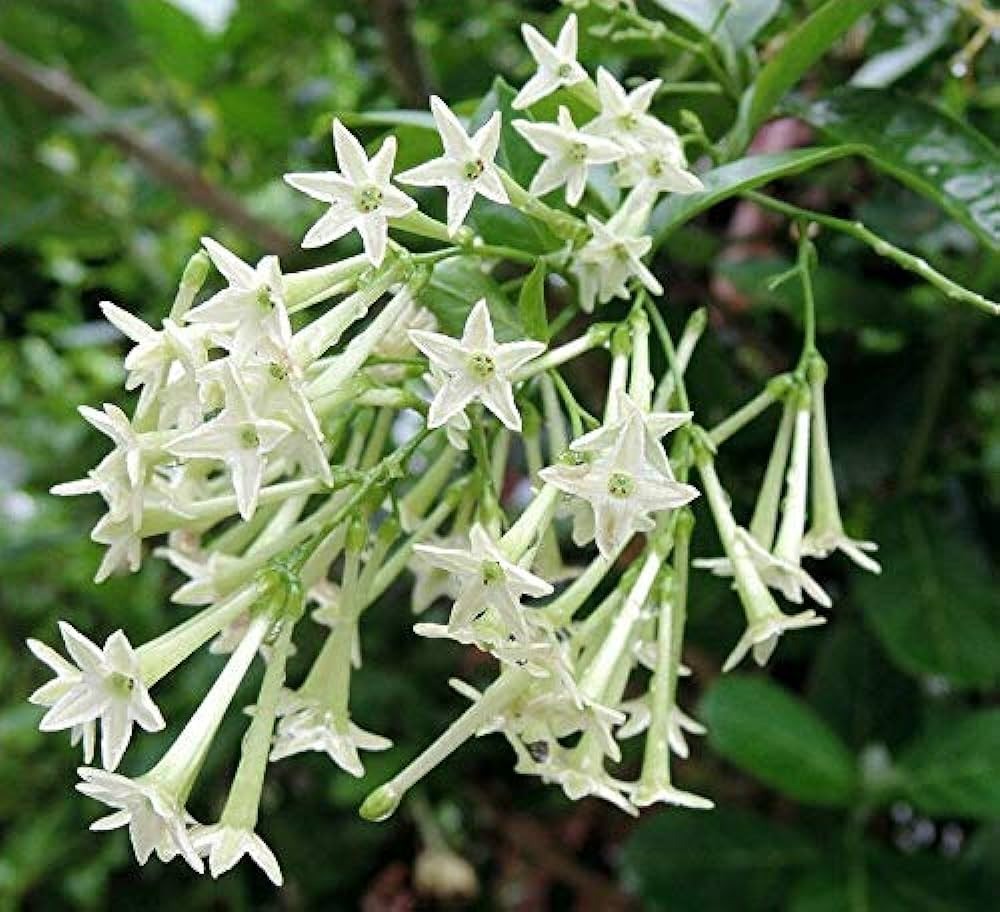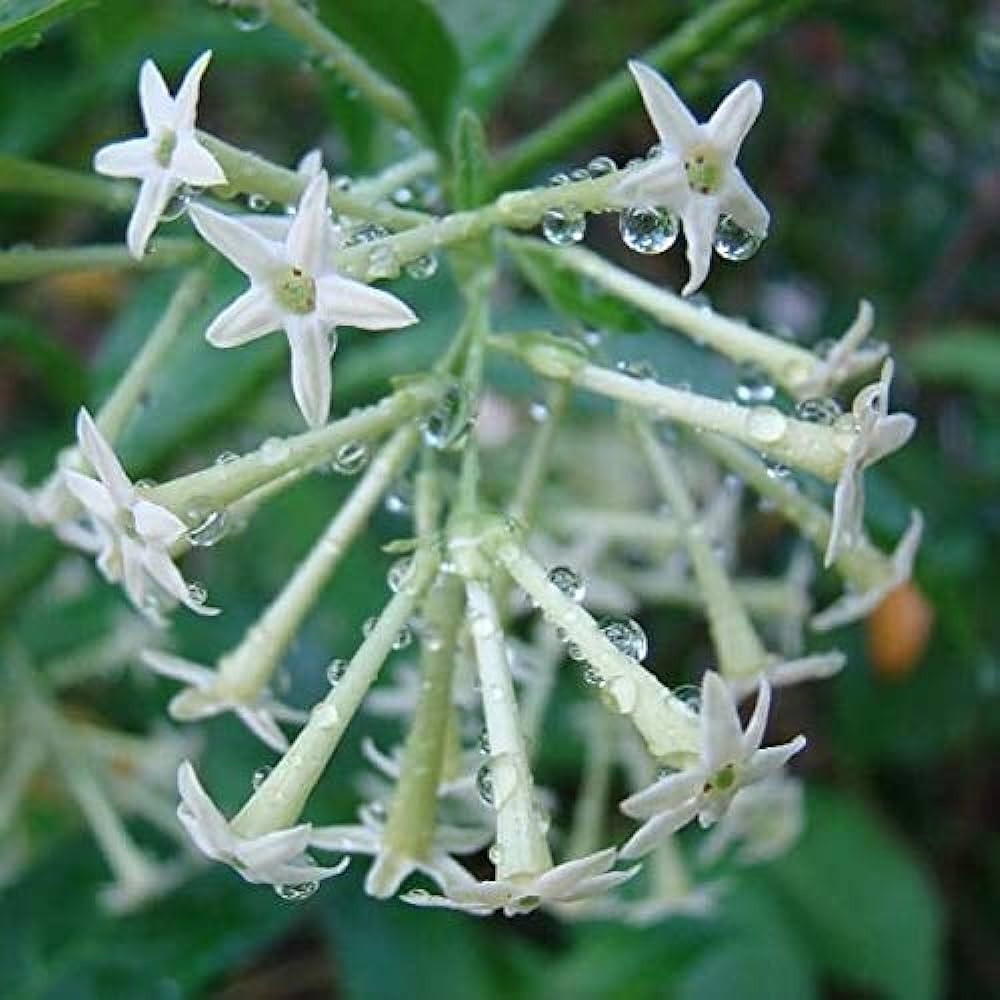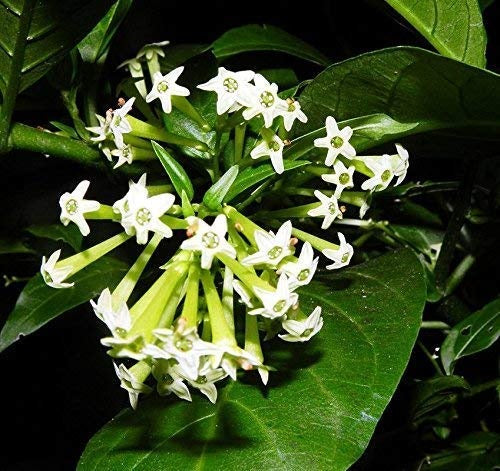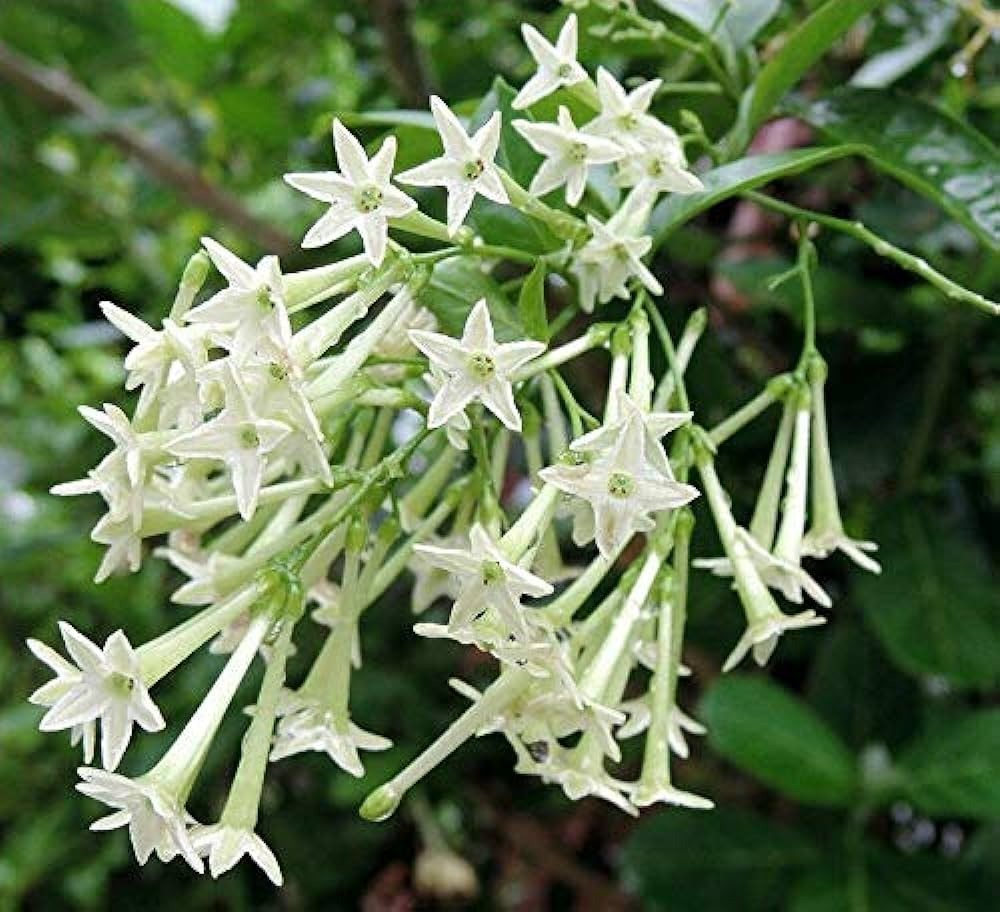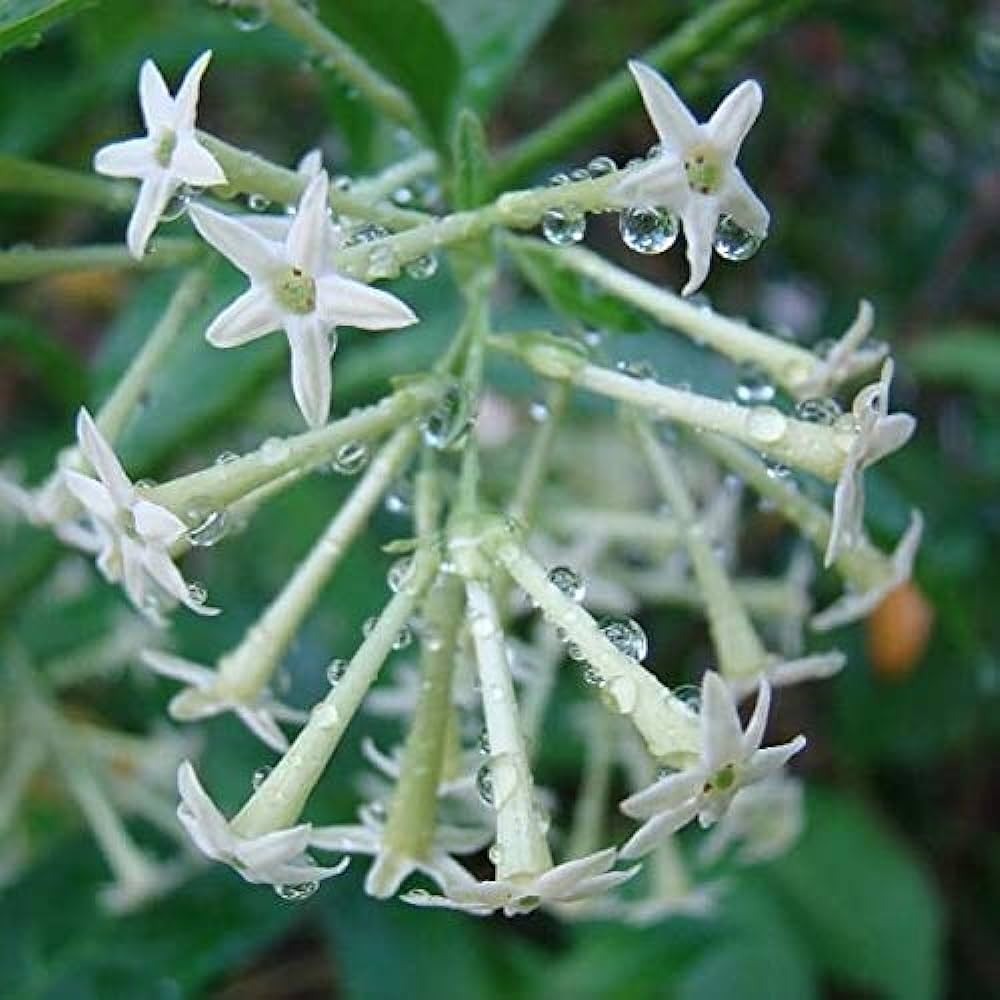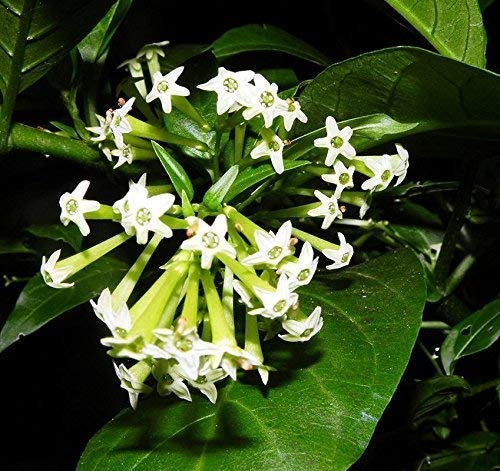Plantparadise
Ratrani (Queen of Night ) Flower Plant
Ratrani (Queen of Night ) Flower Plant
Couldn't load pickup availability
The "Queen of the Night" flower, scientifically known as Epiphyllum oxypetalum, is a stunning and unique flowering plant celebrated for its exquisite, fragrant blossoms that bloom exclusively at night. Here's a description of this captivating plant:
Botanical Name: Epiphyllum oxypetalum
Common Names: Queen of the Night, Dutchman's Pipe Cactus, Night-blooming Cereus, Orchid Cactus, Nishagandhi
Key Characteristics:
-
Growth Habit: Queen of the Night is an epiphytic cactus, which means it naturally grows on trees or other structures rather than in soil. When cultivated as a houseplant, it's usually grown in a hanging basket or container.
-
Stem: The plant features long, flat, and leaf-like stems that are typically green but can vary in color. These stems can grow to several feet in length and have small, inconspicuous spines along their margins.
-
Flowers: The most captivating aspect of the Queen of the Night is its large, fragrant flowers. These flowers are typically white, with numerous wavy petals, and can be as large as 8-12 inches (20-30 cm) in diameter. The flowers bloom exclusively at night and remain open until the early morning, releasing a sweet and intoxicating fragrance that attracts night-flying pollinators like moths.
-
Leaves: Unlike many other cacti, the Queen of the Night has reduced, almost inconspicuous leaves that are not the plant's primary photosynthetic structures. Instead, the stems carry out most of the photosynthesis.
Cultivation and Care:
-
Light: Queen of the Night prefers bright, indirect light when grown as a houseplant. It can tolerate some direct morning sun but should be protected from intense midday or afternoon sun.
-
Temperature: This plant thrives in warm and humid conditions, making it suitable for tropical or subtropical regions. It should be protected from cold temperatures and frost.
-
Watering: Water the plant when the top inch or so of the soil feels dry. It doesn't like to be waterlogged, so ensure that the pot has good drainage. Water sparingly during the dormant winter months.
-
Fertilization: Provide a balanced, water-soluble fertilizer during the growing season (spring and summer) to promote healthy growth and flowering.
-
Pruning: Prune the plant to maintain its shape and remove dead or damaged stems.
-
Repotting: Repot the Queen of the Night when it becomes root-bound, typically every few years, using a well-draining cactus or orchid mix.
Uses:
-
The Queen of the Night is primarily grown for its stunning and fragrant night-blooming flowers. People often keep it as a houseplant or in hanging baskets on patios to enjoy the magical, nocturnal display.
-
In some cultures, the Queen of the Night is associated with various myths and traditions, and its blooms are considered a symbol of beauty and mystery.
-
The plant is not typically used for culinary or medicinal purposes; its value lies mainly in its aesthetic and olfactory qualities.
When cultivating the Queen of the Night, remember that its night-blooming nature can make it somewhat challenging to witness its flowers in full bloom, but the effort is often rewarded with a memorable and enchanting experience.
Materials
Materials
Shipping & Returns
Shipping & Returns
Dimensions
Dimensions
Care Instructions
Care Instructions
